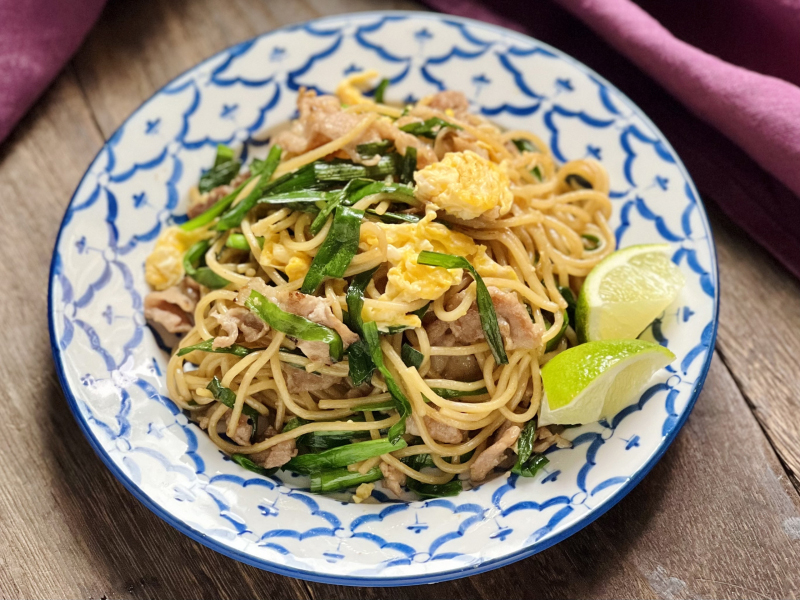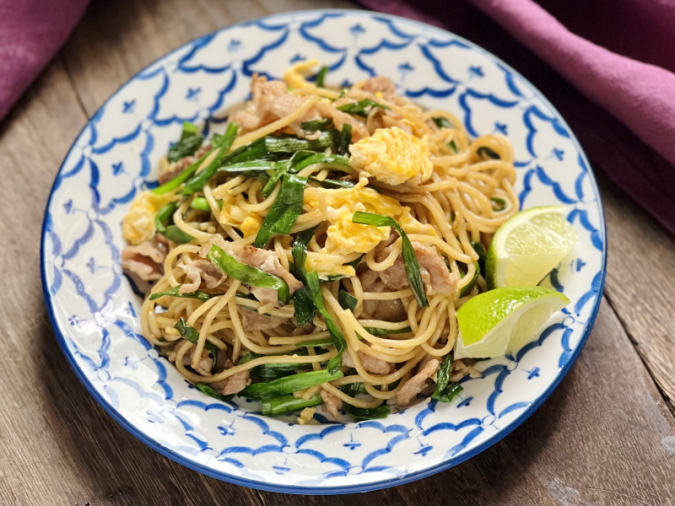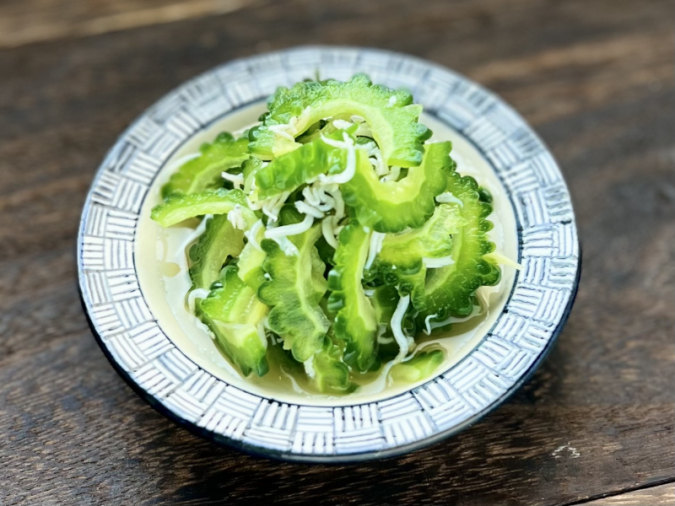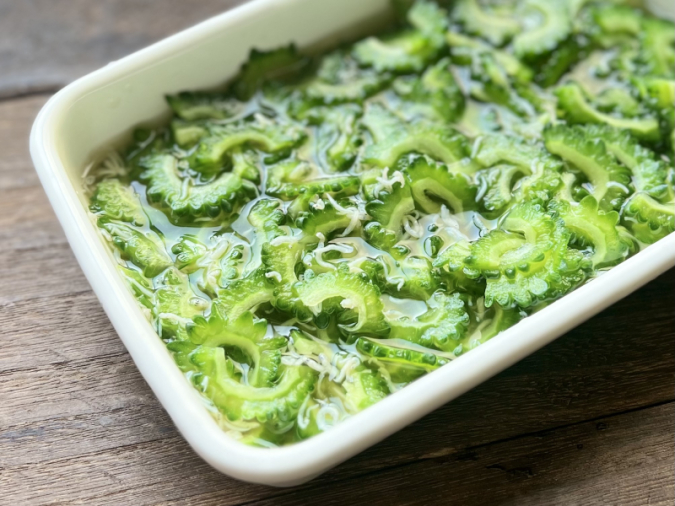
Easy Thai cooking at home! "Few ingredients & substitutes with familiar ingredients" "Pad Thai-style fried noodles" & cold side dishes
Hello. I am Ayumi Nakaganji, a chef.
There's nothing I can do about it if I keep saying it's hot, but it is hot.
In times like these, it's time to eat food from a hot country! So, this time we will introduce a recipe perfect for summer, an adaptation of sweet and sour Thai fried noodles "Pad Thai" using Japanese fried noodles.
We will also introduce a side dish that can be prepared in advance using bitter melon, which goes well with stir-fried and fried dishes.
1: Enjoy the taste of Thailand with yakisoba noodles! "Asian-style pork and chive yakisoba"
If you want to eat pad thai but have trouble finding the right noodles and seasonings, then this is the dish for you. The authentic sauce is made with tamarind, a legume, to give it its sour taste, but this time we've recreated it with pickled plums.
This unique yakisoba has a sweet and sour sauce that is addictive. It can be made quickly with just a few ingredients, so it's also recommended for a solo lunch.

Image: Ayumi Chuganji
[Ingredients] (1 serving)
Yakisoba noodles (steamed)...1 bag
Thinly sliced pork・・・60g
Chinese chives...1/3 bunch
Egg...1
Garlic (minced)・・・1/2 teaspoon
Pickled plum...1 piece
A. Fish sauce・・・2 teaspoons
A Oyster sauce... 1 teaspoon
A Sugar...2 teaspoons
A Water... 1 teaspoon
Salad oil...2 teaspoons
Salt and pepper...a little
Lime... appropriate amount
<How to make>
(1) Make a hole in the bag of yakisoba noodles and microwave at 600W for 1 minute 30 seconds. Cut the chives into 5cm pieces. Crack and beat the eggs. Cut the meat into bite-sized pieces. Remove the seeds from the umeboshi plums, smash the flesh with a knife, place in a container, add ingredients A and mix.
(2) Heat half the salad oil in a frying pan, and when it is hot, pour in the egg mixture all at once to make slightly scrambled eggs. Remove from the frying pan to a plate.
(3) Add the remaining salad oil, add the garlic and meat, season with salt and pepper, and stir fry. When the meat is half cooked, add the yakisoba noodles.
(4) Break up the noodles and fry them. When the meat is cooked through, add the pickled plums and ingredients A from (1) and stir fry. When everything is well mixed, add the Chinese chives. Stir fry briefly, then add (2) back in, mix, and turn off the heat.
(5) Serve in bowls and garnish with lime. If desired, add fish sauce (not included in the recipe) to taste.
If you have dried shrimp or peanuts, crush them and add them to enhance the flavor. Adding shrimp will make it feel like a feast.
2: Bitter melon and whitebait marinated in dashi stock - best served chilled
In order to enjoy the bitterness of the bitter melon, it is boiled for just a moment. Its vibrant green color is beautiful.

Image: Ayumi Chuganji
[Ingredients] (easy to make amount)
Bitter melon...1 piece (edible portion 200g)
A White dashi stock・・・2 tablespoons
A Light soy sauce・・・1 teaspoon
A. Shirasu...15g
A Water・・・200ml
A. Salt... a pinch
<How to make>
(1) Cut off the ends of the bitter melon, cut it in half lengthwise, remove the pith with a spoon, and slice thinly to about 2 mm thick.
(2) Bring a pot of boiling water (not included in the recipe), add salt (not included in the recipe), and boil the bitter melon for about 20 seconds, then drain in a colander and place in cold water.
(3) Drain in a colander and squeeze out the water.
(4) Mix A in a storage container and soak the bitter melon. Chill in the refrigerator.

Image: Ayumi Chuganji
Store in the refrigerator and consume within about 3 days. You can also add sesame seeds or chili pepper when eating. It is also recommended as a topping for bukkake udon and somen noodles.
By the way, bitter melon is also popular in Thailand. There are varieties that are similar to those in Japan, but you will often see varieties that look like "chayote" (Japanese pepper) without any warts and with little bitterness.
What did you think? Let's get through the hot season by eating seasonal foods that will give you stamina and prevent summer fatigue! (Text by Chuganji Ayumi)
*This article contains information current at the time of publication.
※Text and images:Ayumi Nakaganji
#recipe Check them all out!
#Homemade meal #cooking #Gourmet
⇒【NEW】Click here for the latest information on Fukuoka
<Other articles you may like>
◆A compilation of 32 gourmet foods along the approach to Dazaifu Tenmangu Shrine!
◆[Fukuoka's popular ramen restaurant] A nationally popular ramen restaurant
◆[Tosu Lunch] An exquisite hamburger steak that will have you lining up

